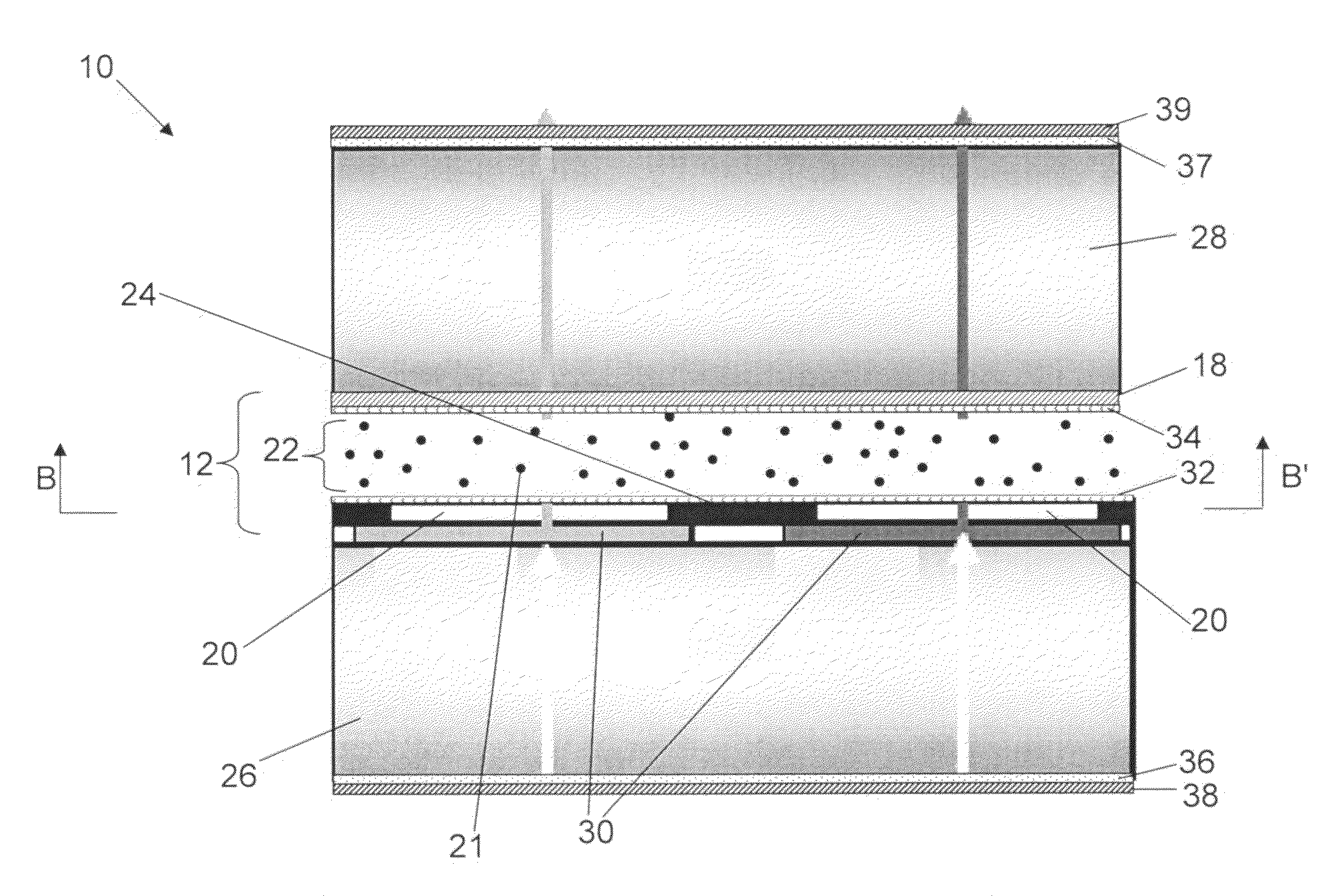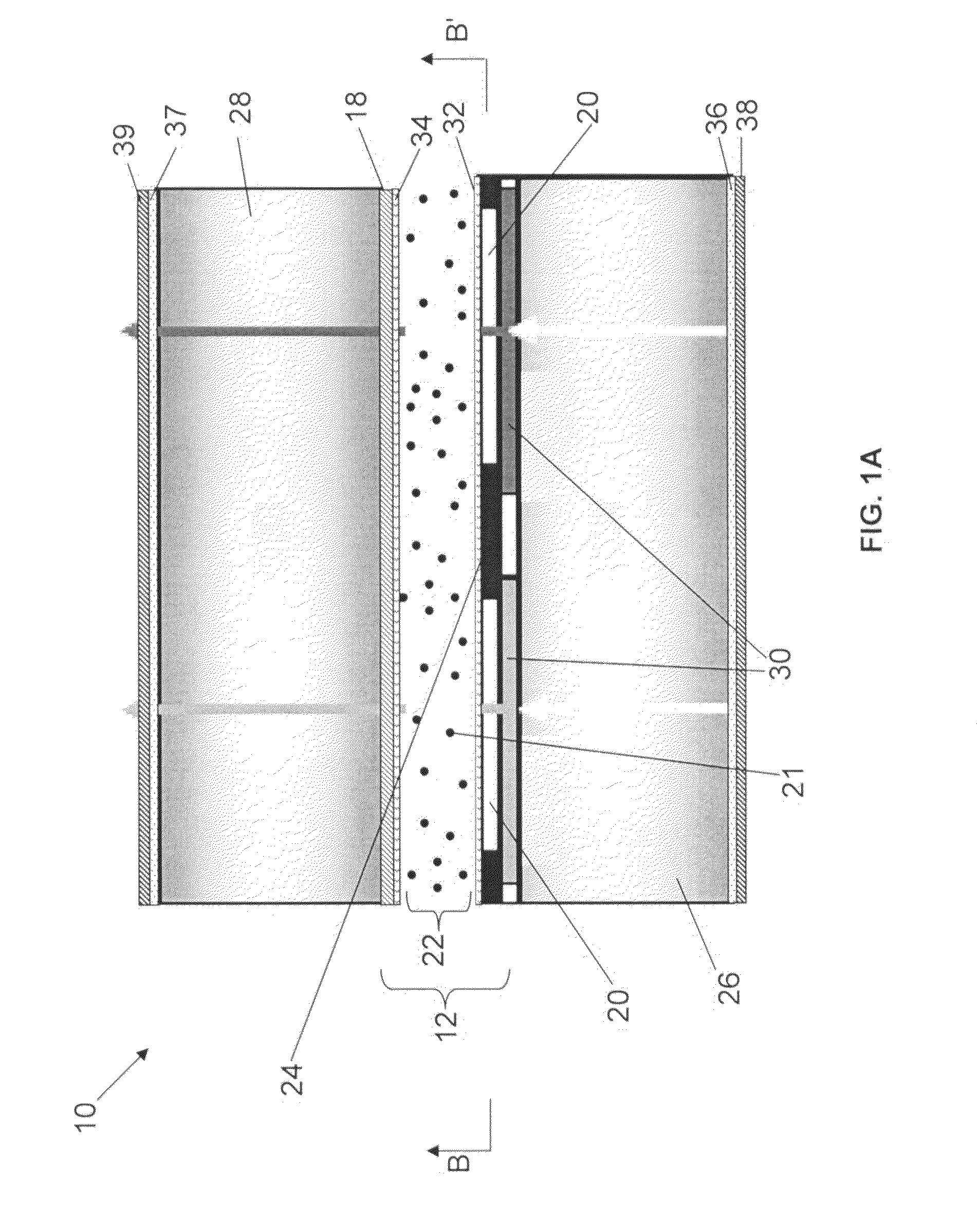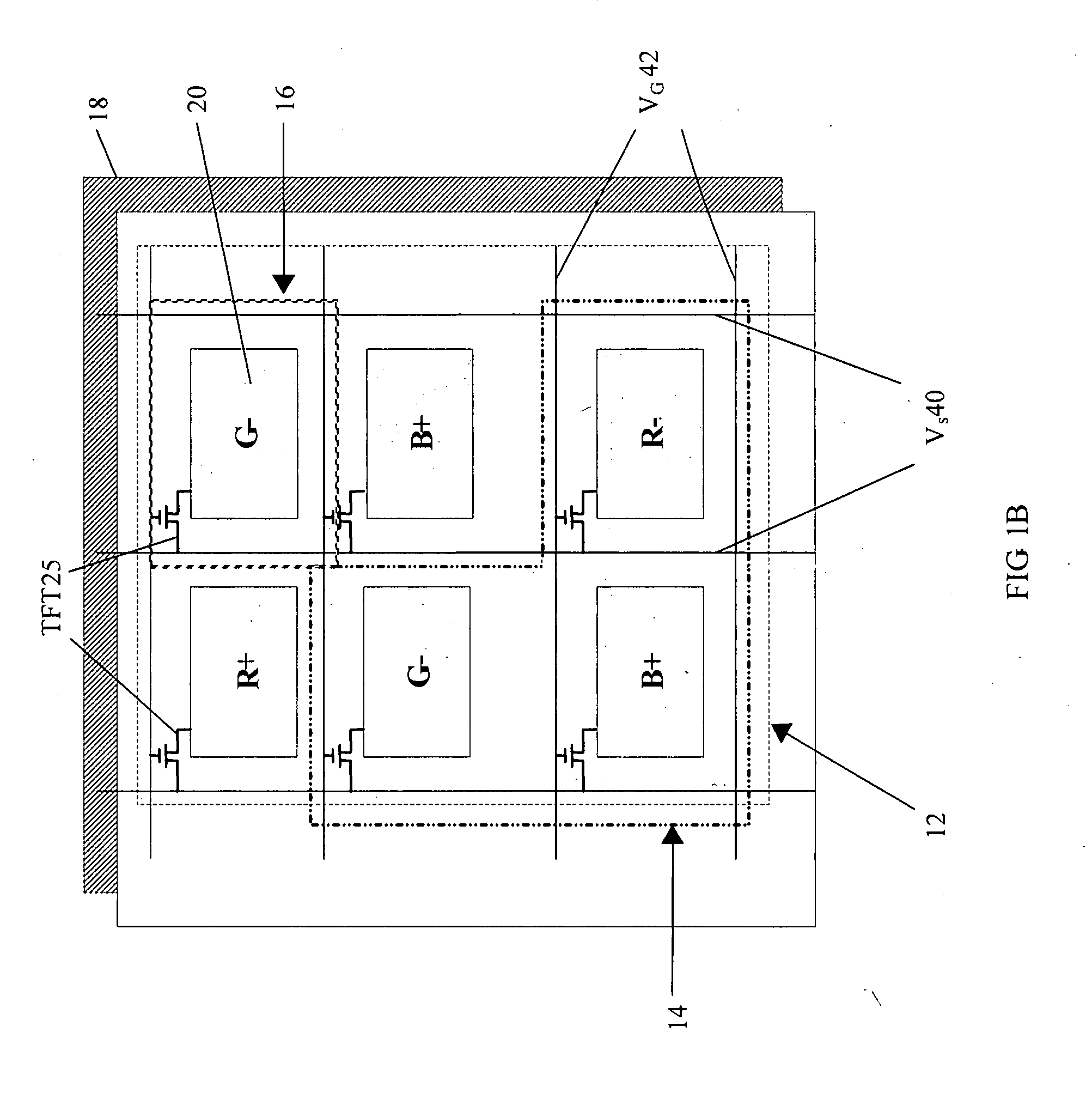Pixel designs for multi-domain vertical alignment liquid crystal display
a liquid crystal display and multi-domain technology, applied in static indicating devices, instruments, non-linear optics, etc., can solve the problems of large color dispersion, narrow viewing angles, slow response times, etc., and achieve low cost fabrication processes and designs, wide viewing angles, and high contrast
- Summary
- Abstract
- Description
- Claims
- Application Information
AI Technical Summary
Benefits of technology
Problems solved by technology
Method used
Image
Examples
example 1
Display Fabrication
[0068]Generally, the MVA displays of the invention can be fabricated as described above. In one example, spin-coated polyimide (PI) (Nissan vertical alignment PIs SE-1211 and RN-1566) as the LC alignment layers, Merck LC MLC-6884, and a cell gap of 2.0-4.0 μm were used for the MVA display fortification. 1 to 6% PI was spin coated at the speed of 1000-4000 RPM. The PI-coated wafers first pre-cure on hot plate at 85° C. for 5 minutes, then final-cure in a vacuum oven for 150-200° C. for 60 minutes. A vertical LC alignment without any pretilt angle was obtained with such PI alignment layers. LCDs with such a polyimide layer generally passed the prolonged reliability test of 72 hours exposure to 85° C. in 85% relative humidity. The fabricated MVA showed a normally black operation, with a wide viewing angle and high contrast ratio.
example 2
MVA Modeling
[0069]MVA display designs for a plurality of repeats can be modeled with both two-dimensional and three-dimensional models, such as Autronic 2-D LC Modeling software (2-D modeling) and Shintech 3-D LC Modeling software (3-D modeling). Geometrical optics approximation can be used for such modeling to make a fast estimation on the MVA electrical optical transmission. The modeling results can be used to understand and improve MVA operation, to help design the display pixel structure, and later compared to measurements from actual displays.
[0070]FIG. 11 shows 3-D calculated optical transmission vs. voltage of an MVA display having a plurality repeats as shown in FIGS. 2A and 2B (“M10 pixel design”). FIG. 12 shows 3-D calculated optical transmission vs. voltage of an MVA display having a plurality repeats as shown in FIGS. 4A and 4B (“M9 pixel design”). FIG. 13 shows 3-D calculated optical transmission vs. voltage of an MVA display having a plurality repeats as shown in FIGS....
example 3
Display Performance
A. Multi-Domain Creation
[0071]FIG. 7 shows a microphotograph of an image of an MVA display having a plurality repeats as shown in FIGS. 2A-2C with 1280×124×3 dot under a crossed polarizer geometry. As can be seen in FIG. 7, each dot showed four domains.
B. Transmission and Contrast Ratio
[0072]Five different MVA displays were prepared with a QVGA resolution (320×240 dots) with a dot size of 15 um×15 um and used for testing different backlight designs utilizing LED light sources, different combinations of diffusers (D) and brightness enhancement films (B): LED+D+B+B; LED+D+D+B+B; LED+B+D. Brightness and contrast ratio of the five displays were tested by Kopin Corporation. The applied voltage was 4.5 volts.
[0073]FIG. 14 shows measured brightness improvement for five displays for three different backlight designs: LED+D+B+B; LED+D+D+B+B; LED+B+D. The horizontal axis shows five different displays, with each curve showing the measured brightness improvement for 3 differe...
PUM
| Property | Measurement | Unit |
|---|---|---|
| pixel size | aaaaa | aaaaa |
| thickness | aaaaa | aaaaa |
| thickness | aaaaa | aaaaa |
Abstract
Description
Claims
Application Information
 Login to View More
Login to View More - R&D
- Intellectual Property
- Life Sciences
- Materials
- Tech Scout
- Unparalleled Data Quality
- Higher Quality Content
- 60% Fewer Hallucinations
Browse by: Latest US Patents, China's latest patents, Technical Efficacy Thesaurus, Application Domain, Technology Topic, Popular Technical Reports.
© 2025 PatSnap. All rights reserved.Legal|Privacy policy|Modern Slavery Act Transparency Statement|Sitemap|About US| Contact US: help@patsnap.com



